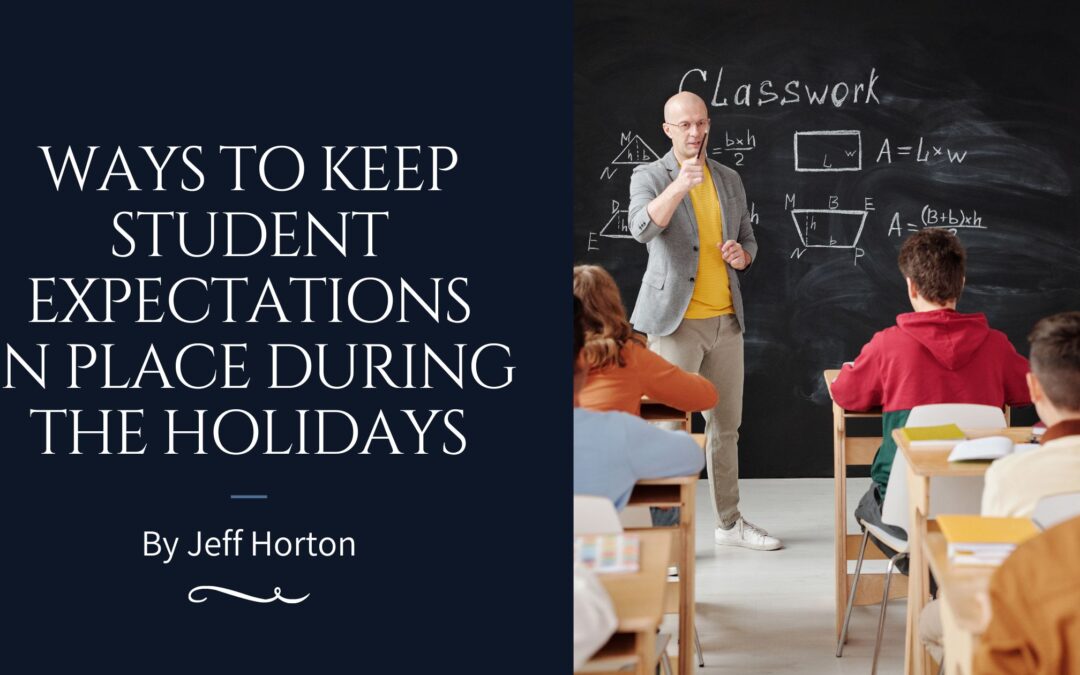The holiday season, with its festive cheer and break from routine, can often lead to a relaxation of academic expectations among students. While a necessary respite, this period can also disrupt learning momentum and classroom discipline. For educators, the challenge lies in balancing embracing the holiday spirit and ensuring that educational objectives are not sidelined. It is crucial to find strategies that keep students engaged and accountable yet still allow them to enjoy the season. There are practical approaches educators can employ to maintain student expectations during the holidays, ensuring a smooth transition back to regular academic rigor post-holiday season.
The holiday season typically signals a break from the regular school schedule, bringing an air of excitement and distraction. Naturally drawn to the festive atmosphere, students can find it challenging to focus on academic responsibilities. This shift is not just a matter of distraction but also a psychological transition as students switch modes from structured learning to leisure and family time. The challenge for educators becomes two-fold: to respect and integrate the festive mood into the learning environment and to keep students on track with their academic goals.
Historically, losing academic focus during holidays has been a notable concern. Research has shown that extended breaks can lead to a phenomenon known as the ‘holiday slide,’ where students regress in their learning progress. This setback is more pronounced in subjects like mathematics and reading, where continuous practice is essential for retention. Consequently, educators are tasked with crafting strategies acknowledging the holiday season and incorporating learning elements that sharpen students’ academic skills. Balancing these aspects is critical to ensuring that the holiday season enriches rather than detracts from the educational experience.
Integrating Holiday Themes into Curriculum
One effective way to maintain student expectations during the holidays is to integrate holiday themes into the curriculum. This approach allows educators to harness students’ natural excitement about the season and channel it toward learning objectives. For instance, math problems can be designed around holiday shopping scenarios, teaching budgeting and arithmetic simultaneously. Writing assignments in language arts can focus on crafting holiday stories or reflecting on cultural traditions, enhancing creative writing skills and cultural awareness.
Science lessons can explore the chemistry of baking or the physics of winter sports, making science fun and seasonally relevant. Social studies classes can examine how different cultures celebrate the holidays, fostering a sense of global awareness and inclusivity.
This method keeps students engaged and breaks the monotony of the regular curriculum, injecting a sense of novelty and excitement. More importantly, it keeps students academically active, subtly reinforcing core academic skills while participating in holiday-themed activities. This approach ensures that learning continues in an enjoyable and relevant manner to the season.
Establishing Clear Expectations and Consistency
Establishing clear expectations and maintaining consistency is critical in keeping student expectations in place during the holidays. Before the holiday season commences, educators should explicitly communicate what is expected of students regarding academic performance and behavior. This clarity helps students understand that while the learning mode might adapt to the festive season, the standards of education and conduct remain unchanged.
Consistency in classroom routines and rules is equally important. While some flexibility is necessary to accommodate holiday activities, the core structure of the classroom should remain intact. For example, this practice should continue if a class starts with a brief review session. This consistency provides a sense of stability and normalcy amidst the holiday excitement.
Regular feedback and assessment during this period can also reinforce expectations. Short quizzes or project milestones can keep students accountable for their learning. This approach keeps them engaged academically and provides a clear indicator of their progress, helping to mitigate the holiday slide.
Furthermore, balancing holiday activities and regular academic work is essential. Educators should ensure that while holiday-themed lessons are enjoyable, they are not so dominant as to overshadow the fundamental curriculum.
Encouraging Self-Regulation and Responsibility
Encouraging self-regulation and responsibility among students is a vital strategy for maintaining expectations during the holidays. This approach involves guiding students to take ownership of their learning, an invaluable skill for the holiday season and their academic journey.
One way to foster self-regulation is through goal-setting activities. Students can be encouraged to set specific, measurable academic goals for the holiday period. This practice promotes a sense of purpose and helps keep their focus on learning objectives. Teachers can support this by providing tools and resources for students to track their progress, such as learning logs or digital platforms.
Another aspect is teaching time management skills. Managing time effectively becomes crucial with the plethora of holiday activities and distractions. Workshops or classroom discussions on time management can equip students with strategies to balance their academic responsibilities with holiday engagements.

